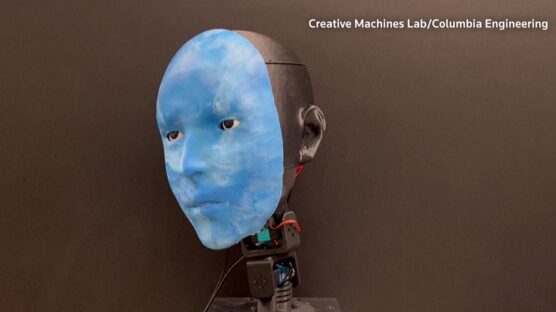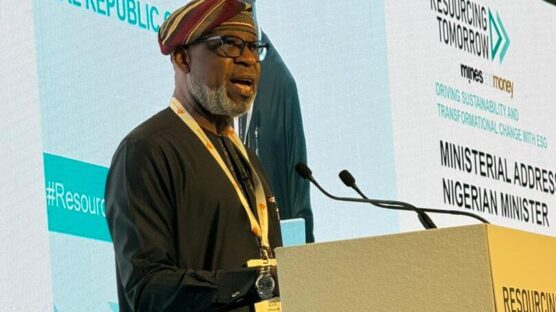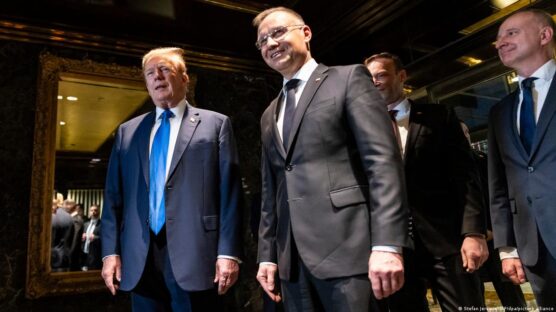How the James Webb telescope shows us the universe as we’ve never seen it before
By France24
13 July 2022 |
2:41 pm
On Christmas Day 2021, the James Webb telescope launched into space. Now, it has delivered some of the most breathtaking images of the universe to date. Using new infrared technology, the telescope can capture sharper photos in full colour, allowing scientists to see the origins of stars, planets, and the first galaxies. Our journalists Florence Gaillard and Emma James take a look at the advent of the project.
In this article
Related
Related
14 Apr
TikTok is seemingly developing a photo-sharing app like Instagram.
17 Apr
With Nigeria’s key lending rate at 24.75 per cent, developers in Nigeria’s real estate sector say the rate is fast impacting the growth of the industry. How are developers adapting to market shifts and new opportunities amid these challenges? Ayoolanrewaju Kuyebi, the MD and CEO GMH Luxury joins CNBC Africa for this discussion.
17 Apr
In Nigeria, a pharmacist's club create awareness about andropause. They de-stigmatizes andropause and advocates regularly healthy checks.
21 Apr
Australian scientists say the Great Barrier Reef – the world's largest coral reef, stretching over 2,300 kilometres along the country's northeastern coast – is undergoing its seventh "mass bleaching" event since 1998. This comes after they conducted aerial surveys of more than 300 shallow reef. Faced with climate change, coral reefs are the most vulnerable ecosystems in the world. But various techniques are being experimented to restore them
4 days ago
The world of work is undergoing a rapid transformation, constantly reshaping how we think about work, careers, and success. The rise of remote work, the increasing importance of skills over degrees and of course, the impact of artificial intelligence and automation has all led to what we now call the new work era.
2 hours ago
Engineers at Columbia University's Creative Machines Lab have developed Emo – a robot capable of mimicking human facial expressions – to “enhance the interactions between humans and robots.” Emma Jehle has more.
Latest
1 hour ago
Nigeria has revoked 924 dormant mining licences while calling on investors to apply for the licences offered on a first-come, first-served basis. Meanwhile, the Lagos Chamber of Commerce and Industry is urging the government to review the mining industry strategy to attract mineral exploration investments, reignite mining project development, and accelerate new mineral discoveries.
2 hours ago
The first fitness summit and Awards event in Nigeria, Wemove, took place at Lekki Phase I, Lagos a few weeks back. Powered by the Institute Of Registered Exercise Professionals And Purefitness Africa, the event brought together all fitness lovers and professionals, from across the country, in a bid to celebrate fitness and wellness in Nigeria. GuardianTV was at the event to report all the conversations on core issues faced by the fitness industry in Nigeria.
1 day ago
Find these stories and much more when you grab a copy of The Guardian on Saturday.
1 day ago
Trump and Duda discussed a range of issues, including Russia's invasion of Ukraine. Ahead of the November US presidential election, Trump is taking time to forge ties with foreign leaders.
1 day ago
April 22 marks Earth Day, and this year's theme is "Planet vs. Plastics". Over the past 60 years, around 7 billion tons of plastic have been produced, according to the UN. But only around 10 percent of it has been recycled. Initiatives are flourishing around the world to tackle the waste crisis, including new technology to improve recycling rates.
1 day ago
Guardian Woman Festival: Women's World - Strength in Femininity
×

Get the latest news delivered straight to your inbox every day of the week. Stay informed with the Guardian’s leading coverage of Nigerian and world news, business, technology and sports.


















0 Comments
We will review and take appropriate action.